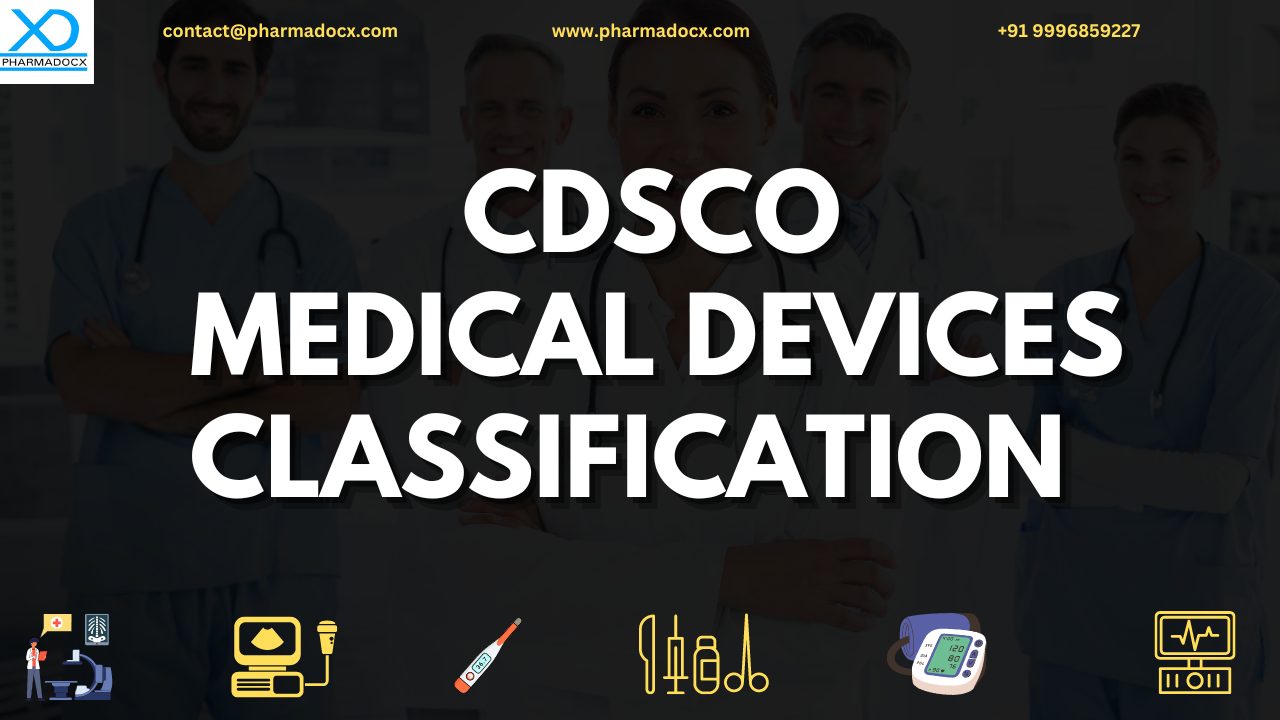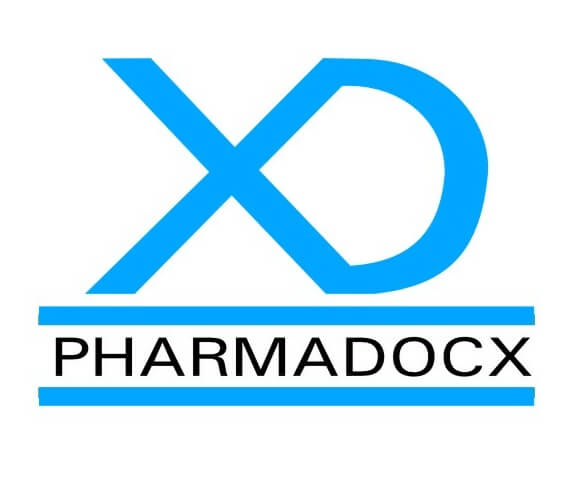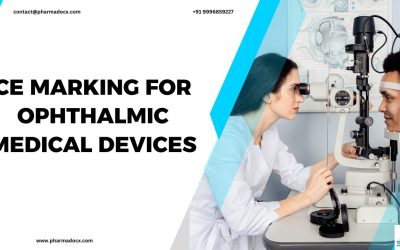Medical devices have a vital role in the healthcare industry. These devices are used to diagnose, monitor, and treat patients. India is one of the top global medical device markets. Government bodies usually regulate these devices, used by healthcare professionals, to ensure their safety and effectiveness. In India, the Central Drugs Standard Control Organization (CDSCO) regulates and controls medical devices. For registration, certification, licensing purposes, the CDSCO has categorised medical devices into various classes. In this blog, we will focus on CDSCO medical devices classification.
What is the CDSCO?
Central Drugs Standard Control Organization (CDSCO), under the Ministry of Health and Family Welfare, regulates medical devices and drugs. Similar to the Food and Drug Administration of the US, European Medical Agencies, and health services products Regulatory Agency of the United Kingdom, the CDSCO oversees that all medical devices and drugs sold in India are effective and safe. CDSCO monitors and controls the registration and sale of medical devices in India. The CDSCO works under the guidance of Medical Devices Rules, 2017. Medical Devices Rules, 2017, controls the regulatory framework for medical devices and pharmaceuticals. Medical Devices Rules, 2017, were introduced to align the existing regulatory framework with international standards.
The Drug Controller General of India is the governing body of CDSCO. The CDSCO has two arms: Center Licensing Authority and State Licensing Authority. These arms are vested with different levels of power. Compliance with multiple regulations based on device classification and patient safety standards is essential for registering medical devices with CDSCO.
What is the role of CDSCO?
CDSCO regulates the approval, manufacturing, and marketing of medical devices and pharmaceuticals. It is responsible for ensuring the safety, efficacy, and quality of these products in India. CDSCO plays a crucial role in ensuring patient safety, thus protecting the public health in India.
What is medical device classification?
Based on certain parameters, such as risk level and intended used, medical devices are grouped into specific classes. The medical device classification helps determine the regulatory pathway and requirements for market authorization of medical devices in a country. The manufacturer can fill in the registration and licensing paper work depending on the medical device class.
What are medical devices as per Indian rules?
Medical devices are a fundamental component of the healthcare system that are used to diagnose, alleviate, treat, or prevent diseases. As per the regulatory body and rules of the Indian government, a medical device is defined as follows:
Devices used internally or externally for the diagnosis, treatment, mitigation, or prevention of disease or disorder in human beings or animals. Substances or apparatus used for in vitro diagnosis. Additionally, the following substances are also considered medical devices: surgical bandages, surgical sutures, surgical staples, surgical dressings, blood and blood component collection bag, intrauterine devices, mechanical contraceptives, ligatures, insecticides, and disinfectants.
CDSCO medical devices classification
Based on the risk level, medical devices are divided into four classes. The classification system is sorted from the lowest to the highest risk. CDSCO medical device classification list was prepared mainly for the ease of certification, registration, and licensing purpose.
The four medical devices classes are as follows:
- Low-risk medical devices are grouped as class A. Examples: gloves, elastic bandages, hot water bags, sphygmomanometer, and walking aids
- Low to moderate-risk medical devices are grouped as class B. Examples: syringes, surgical instruments, blood glucose monitoring devices, nebulizers, and other diagnostic equipment
- Moderate to high-risk medical devices are grouped as class C. Examples: cardiac stents, implantable devices, X-Ray machines, infusion pumps, MRI machines, and ventilators
- High-risk medical devices are grouped as class D. Examples: drug-eluting stents, implanted pacemakers, artificial joints, and heart valves
Medical device categories:
CDSCO has grouped medical devices into 24 categories:
- Anaesthesiology
- Pain Management
- Cardiovascular
- Dental
- Ear, Nose, Throat (ENT)
- Gastroenterological
- Urological
- General Hospital
- Operation Theater (OT)
- Respiratory
- Neurological
- Personnel use
- Obstetrical and Gynecological (OG)
- Ophthalmic
- Rehabilitation
- Physical support
- Interventional and Radiology
- Rheumatology
- Dermatology and Plastic Surgery
- Pediatric and Neonatology Medical
- Oncology
- Radiotherapy
- Nephrology and Renal care
- Software
Depending on the risk level, CDSCO has further subdivided the categories into medical device class. The detailed CDSCO list of medical devices grouped into specific categories and their designated classes can be accessed here.
The implication of CDSCO medical devices classification
The CDSCO medical devices classification system depends mainly on the level of risk associated with the medical device. It also depends on the intended use, delivery method, and degree of invasiveness in the human body. The CDSCO medical devices classification system proposed by Medical Devices Rules, 2017, has several important implications:
- Registration and licensing purpose: The primary purpose of the CDSCO medical devices classification system is to grant medical device manufacturing/import license in India. The classification system helps to ease the licensing process. Different forms are available based on the CDSCO medical devices class. The CDSCO list of medical devices helps manufacturers and marketing companies determine under which class to apply for a medical device license.
- Patient safety: The classification system helps the regulatory body identify and regulate medical devices. The aim of this regulation is ensuring safety and effectiveness of the products available in the Indian market. Ultimately, the goal is to minimize any potential harm to patients.
- Regulatory compliance: The CDSCO medical devices classification also ensures proper compliance with the required standards and quality control measures. The manufacturers are required to abide by the regulatory benchmark set for the particular medical device class.
- Market access: India is one of the top medical devices market worldwide. CDSCO medical devices registration will provide access to one of the top global medical devices market. Based on the CDSCO medical device classification list, manufacturers can easily understand the regulatory requirements for their product. Thus, they can gain access to the Indian medical devices market.
- International standard: Compliance with the CDSCO medical devices classification system and its regulation would indicate compliance with international standards.
- Innovation and research: The classification system-based regulatory framework fosters innovation and research in the medical device industry by offering clear cut pathways.
Medical device classification: A vital component of the healthcare system
The CDSCO is aimed at preventing the new medical devices from entering the healthcare market without proper licensing and registration. The classification and categorization of medical devices are vital components of the Indian regulatory framework implemented by CDSCO. The CDSCO medical devices classification system has made it easy for medical devices manufacturers to obtain their manufacturing licenses. The classification of medical devices helps manufacturers and importers as well as regulators in the evaluation and approval processes. The well-defined classification system helps CDSCO easily monitor and regulate safety, quality, and efficacy of medical devices. This in turn helps protect the health and safety of patients as well promote innovation and growth of the Indian medical device industry. Thus, the overall advancement of a safe and effective healthcare system is indirectly dependent on the medical devices classification system.
How can Pharmadocx Consultants help you?
The CDSCO medical devices classification system and license application process are complex and difficult to navigate. The Pharmadocx Consultants team will be more than happy to help you navigate this complex process. Our team of experts provides consultation services for manufacturing and import licensing of all types of medical devices as per CDSCO guidelines. To obtain manufacturing, import, and test licenses, feel free to contact us at 9996859227 or email us at [email protected]





